Annapurna Circuit Trekking
Nestled amidst the rugged Himalayan terrain, the Annapurna Circuit Trekking offers a serene escape from the chaos of modern life. Yet it presents a physically demanding challenge that tests even the most experienced hikers.
The allure of this iconic trek lies not only in its breathtaking vistas but also in the cultural tapestry woven by the diverse communities along the way. As trekkers traverse through a landscape that transitions from lush forests to barren highlands, an unforgettable journey unfolds. It promises a blend of natural wonders and human encounters that will leave them yearning for more.
Key Points
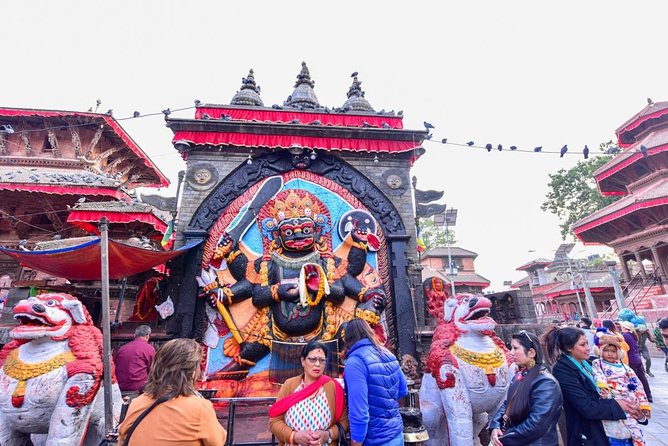
- Diverse trekking routes offer culture and local cuisine exploration.
- Essential packing list includes gear for varying weather conditions and altitude challenges.
- Optimal visit times are autumn and spring for stable weather and clear views.
- Accommodation options range from budget-friendly teahouses to luxurious guesthouses along the trek.
Here's some more nearby activities we've reviewed
Trekking Routes and Itinerary
When embarking on the Annapurna Circuit Trekking adventure, hikers are greeted with a diverse array of trekking routes and a detailed itinerary to explore the breathtaking landscapes of the region. The trail difficulty assessment ensures that trekkers can choose routes that match their skill level, whether they’re beginners or experienced hikers seeking a challenge.
Along these paths, hikers can also indulge in the delightful experience of local cuisine exploration. This includes trying traditional Nepalese dishes like dal bhat (lentil soup with rice), momos (dumplings), and thukpa (noodle soup). Exploring the local cuisine not only refuels the body but also provides a culture experience that adds a flavorful dimension to the trekking journey.
Essential Packing List for Trekkers
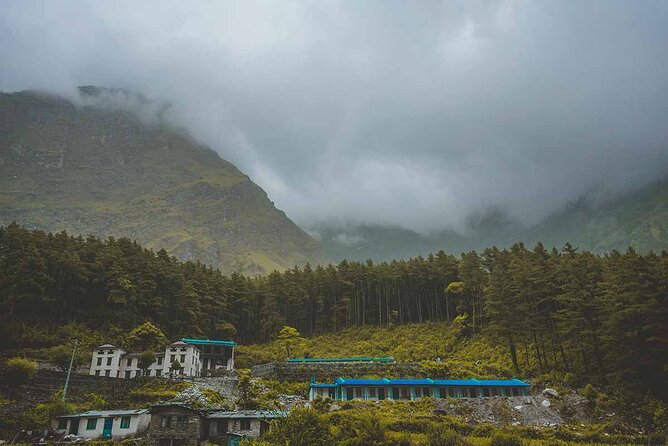
Packing smartly is crucial for trekkers preparing to embark on the Annapurna Circuit adventure. When gearing up for this challenging journey, having the right essentials is key. Trekkers should pack sturdy hiking boots, moisture-wicking clothing, a good quality backpack, a sleeping bag rated for cold temperatures, and a reliable tent.
Plus, it’s important to bring essential gear such as a headlamp, trekking poles, a water filtration system, and a first aid kit. Since weather conditions along the Annapurna Circuit can vary from hot and humid in the lower regions to cold and snowy at higher altitudes, it’s vital to pack layers to accommodate these changes. Being well-prepared with the right gear can make the trek safer and more enjoyable.
Best Time to Visit Annapurna Circuit
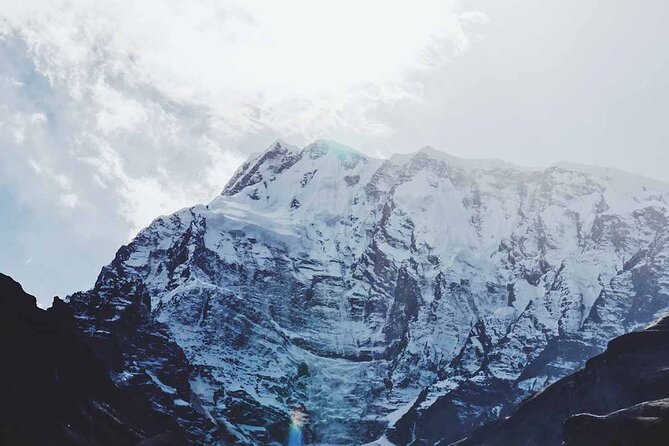
As trekkers plan their Annapurna Circuit adventure, timing their visit to coincide with the optimal season can significantly enhance their experience amidst the stunning landscapes of the Himalayas. The best time to visit the Annapurna Circuit is during the autumn months of September to November and the spring months of March to May. During these periods, the weather conditions are generally stable, with clear skies and moderate temperatures, making it ideal for trekking. The peak season for trekking in the Annapurna region is during October when the skies are clearest, offering breathtaking views of the surrounding mountains. Trekkers should be prepared for colder temperatures at higher altitudes and occasional rainfall during the spring months.
| Best Time to Visit | Weather Conditions |
|---|---|
| September – November | Stable, clear skies, moderate temperatures |
| March – May | Occasional rainfall, moderate temperatures |
Accommodation Options Along the Trek

Discussing the various accommodation options along the Annapurna Circuit trek reveals a diverse range of lodges, teahouses, and guesthouses catering to trekkers of different preferences and budgets.
-
Tea Houses: These traditional mountain lodges offer basic amenities and a chance to experience local culture firsthand.
-
Camping: For those seeking a more adventurous experience, camping along the trek is also an option, allowing trekkers to immerse themselves fully in the natural surroundings.
-
Budget vs. Luxury Accommodations: Trekkers can choose between budget-friendly teahouses with shared facilities or opt for more luxurious guesthouses providing comfortable rooms and hot showers, catering to varying comfort levels and preferences.
With these diverse accommodation options, trekkers can find the perfect place to rest and rejuvenate along the stunning Annapurna Circuit.
Tips for Acclimatization and Altitude Sickness

To acclimatize effectively and prevent altitude sickness while trekking the Annapurna Circuit, trekkers should gradually ascend in elevation and stay hydrated throughout their journey.
Acclimatization techniques such as taking rest days, ascending slowly, and not skipping altitude gains are crucial. High altitude challenges like decreased oxygen levels and rapid altitude gain can lead to altitude sickness, so trekkers must be mindful of their bodies’ signals.
It’s essential to maintain proper nutrition, avoid alcohol, and listen to the advice of experienced guides. Health precautions like carrying necessary medications for altitude sickness and being aware of symptoms such as headaches, nausea, and dizziness are vital.
Here's a few more nearby tours and experiences we have reviewed.
- Kathmandu: City Flavors Guided Walking Tour
- Spiritual Nepal: Expert Insight Into Hinduism and Buddhism
- Experience Luxury Travel: Pokhara to Kathmandu by Sofa Bus
- From Kathmandu: Nagarkot Panoramic Day Hike With Lunch
- Kathmandu: Private One Day Nagarkot Sunrise and Hiking Trip
- From Kathmandu: Nagarkot Tour Package 1 Nights 2 Days
Common questions
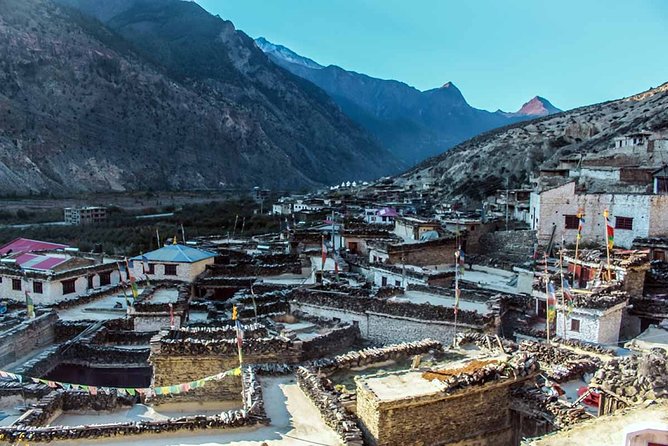
What Permits and Fees Are Required for Trekking the Annapurna Circuit?
When trekking in high altitudes, packing essentials like warm clothing, proper footwear, and hydration are crucial. Altitude sickness is a serious concern, so gradual acclimatization and staying hydrated can help prevent its effects during the trek.
Are There Any Specific Cultural Customs or Etiquette to Be Aware of While Trekking in the Annapurna Region?
When trekking in the Annapurna region, it’s crucial to be mindful of cultural customs and etiquette. Respect local traditions, dress modestly, greet people with "Namaste," and always ask permission before taking photographs. Embracing these practices enriches the trekking experience.
What Are Some Recommended Travel Insurance Options for Trekking the Annapurna Circuit?
When considering travel insurance, it’s wise to compare policies for the best coverage. Plus, trekking gear recommendations and packing essentials play a crucial role in ensuring a safe and enjoyable journey through challenging terrains.
Are There Any Emergency Services or Medical Facilities Available Along the Trekking Route?
Emergency evacuation services and first aid stations are crucial along trekking routes. Medical facilities and helicopter rescue options provide essential support in case of emergencies. These services ensure the safety and well-being of trekkers.
Can You Provide Information on the Availability of Wi-Fi or Communication Services During the Trek?
Wi-Fi availability and communication services vary along trekking routes. Tea houses and accommodations may offer limited Wi-Fi in some areas. Travelers should inquire beforehand and be prepared for intermittent connectivity during their journey.
Here's more of our most recent tour reviews happening neaby
- Hindu Holy Tour
- Chitlang Markhu Guided Hiking and Overnight Tour
- Cultural Tour Arouind Kathmandu With Authentic Nepali Lunch
- Kathmandu-Chisapani – Nagarkot Trek 3 Days
- Nagarkot Dhulikhel Day Hiking
- Half Day Shivapuri Bird Watching Tour
- Kathmandu Valley Full Day Tour
- Upper Mustang Trekking
- 5 Days Chisapani Nagarkot Trek (Family Trekking)
- From Kathmandu: Delhi & Taj Mahal Trip
- Changunarayan Nagarkot Day Hiking Tour From Kathmandu
Last Words
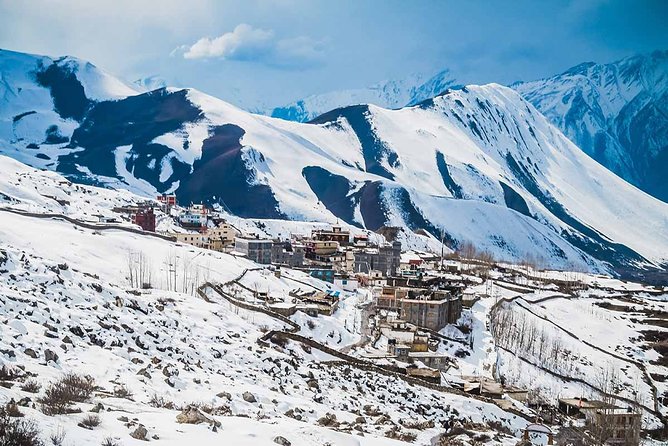
Embark on the Annapurna Circuit trekking adventure to witness the awe-inspiring beauty of the Himalayas and learn about the rich culture of the region.
With a well-planned itinerary, essential packing list, and tips for acclimatization, this journey promises an unforgettable experience for trekkers of all levels.
Choose the best time to visit, explore accommodation options, and prepare for a life-changing expedition through the stunning landscapes of the Annapurna range.